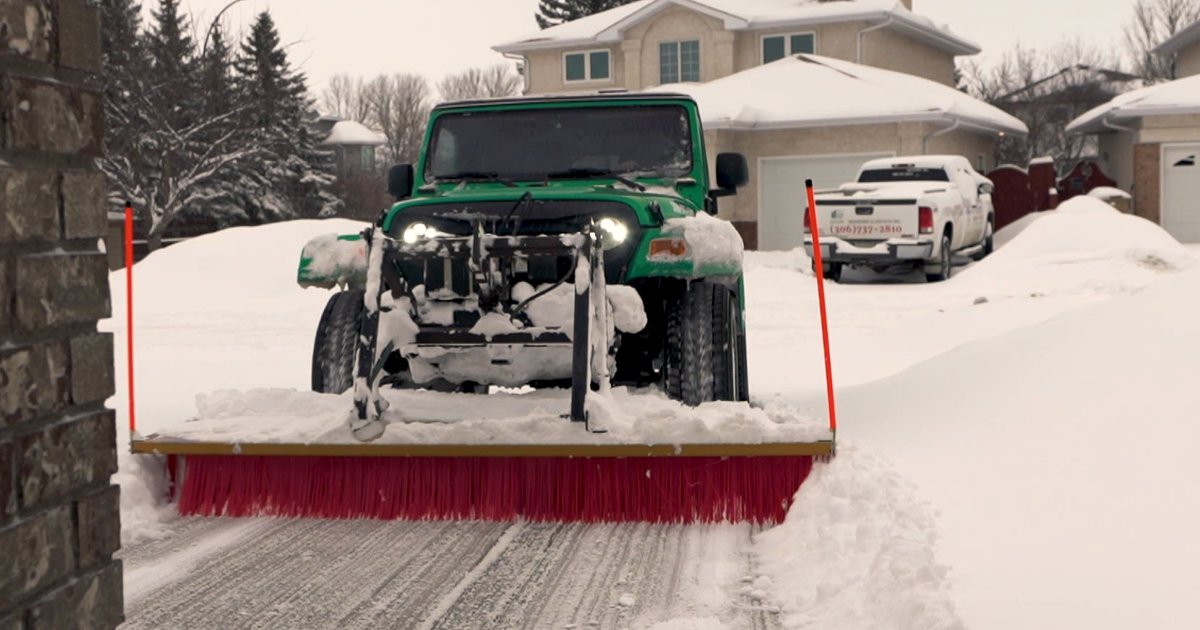

Our premier weed control service in Regina specializes in eliminating stubborn weeds and preventing their return with safe, effective treatments. Our team is dedicated to ensuring your satisfaction when it comes to keeping your lawn healthy all year round
We prioritize your needs and feedback, ensuring a personalized, friendly, and attentive experience every step of the way.
Our comprehensive packages ensure your lawn receives everything it needs without any surprise add-ons mid-season.
Weed Pro offers specialized weed control services in Regina that are designed to keep your lawn in the best shape possible. Our expert team uses environmentally safe and high-quality products to effectively eliminate weeds. With our commitment to excellence, you can enjoy a healthy lawn free from invasive plants and insects, like chinch bugs, all season long.
We take immense pride in being a locally owned and operated business dedicated to serving our community in Regina. Our deep roots in the area mean we understand the unique challenges of local lawn care. By choosing us, you support a business that values and invests in your neighborhood, delivering personalized and reliable service you can trust every single time.


Looking for an effective weed control service in Regina that can eliminate stubborn weeds? Look no further! Weed Pro specializes in using post-emergent herbicides to manage and control the variety of weeds native to Regina. Our treatments are safe for your family and the environment, as they are all family and pet-friendly.
Our weed control treatments are safe for your pets and family once dry, typically within 2 hours of application. We ask customers to stay off the treated areas until then to ensure the best results.
Since 2004, we’ve been providing top-notch sprinkler blowout services. Our years of experience have allowed us to perfect our methods and understand the unique needs of our customers.
All of our pesticide applicators have undergone extensive training with the province of Saskatchewan, guaranteeing expert and responsible application of weed control products.
Weeds can germinate and take root every 4-6 weeks, which is why a single application in the spring or summer is not sufficient to maintain a weed-free lawn throughout the growing season. If you sign up for one of our packages, we’ll come at least three times throughout the season to ensure your lawn is free from weeds.
With so many windy days in the summer, we adjust our equipment to disperse larger droplets of weed control solution to prevent drift into your flower beds and gardens, ensuring that only your lawn is treated and your landscape is safe.
You will start to see less resistant weeds limp or curl within a few days of treatment. In some cases, it can take up to two weeks for the weeds to show visible signs of decline. We ask for your patience during this period.
Certain weeds in Regina, such as Creeping Bell Flower, Canadian Thistle, and Wild Violet, are more resistant and require multiple applications to control. Please call us if you notice these or any other weeds persisting 2 weeks after our first application. We welcome your feedback and will gladly retreat the area.
We offer both one-time applications and comprehensive packages.
While a one-time application can provide temporary relief, it does not guarantee long-term weed control, therefore we can’t guarantee your lawn will be weed-free. On the other hand, our packages include three applications and reapplications as needed until the weeds are totally under control and you’re completely satisfied.
Within a few hours of applying our weed control, the product becomes rainfast, though we do not recommend watering until the next day to see full effectiveness.
Within 48 hours, the weeds are dead and have no hope of recovery. However, the effects of the weed control will take time to see. You can expect the weed to start looking sick and limp within 4-7 days. The weed then must shrivel up and dry out for it to disappear altogether. This usually takes 2-3 weeks, depending on how hot it is. It’s very important to wait 2 weeks until after the weed control is applied before calling us with concerns of ineffectiveness. This is because we want to avoid harming your grass. If we reapply weed control treatments less than two weeks apart, the weed control may have a negative impact on your lawn too.
Your satisfaction is our top priority. We stand by the quality of our weed control service with a 100% satisfaction guarantee. If you are not completely happy with the results, we will work with you to make it right. Our goal is to ensure that you have a beautiful, weed-free lawn that you can be proud of, backed by a guarantee that gives you peace of mind. Contact us today to learn more about our services or to schedule a treatment. At Weed Pro, we value your trust and feedback and are committed to keeping your lawn healthy and beautiful.
EXCELLENTTrustindex verifies that the original source of the review is Google. Very satisfied with service. Mohammad was courteous and professional. The procedure to very little time. Would recommend WeedPro to anyone who needs water lines blown out.Posted onTrustindex verifies that the original source of the review is Google. As always Weed Pro have done an excellent job, punctual, friendly, affordable and hassle free. I have used lawn pro to blow out my home sprinkler system for 10 years or more and never had problem when I turn my water on in the spring! They keep doing what they always done...excellent service.Posted onTrustindex verifies that the original source of the review is Google. Scheduled and paid online which was super easy. Definitely recommend!Posted onTrustindex verifies that the original source of the review is Google. Came on time and followed up when they were done. Easy to work with. Highly recommend Weed Pro!Posted onTrustindex verifies that the original source of the review is Google. Thank you Weed pro. I used the sprinkler blow out service. Came on date agreed to and job done quickly including hoses. Pleasant staff who today was MohammadPosted onTrustindex verifies that the original source of the review is Google. Highly recommending Weedpro for all your yard and snow removal needs. Always professional.
